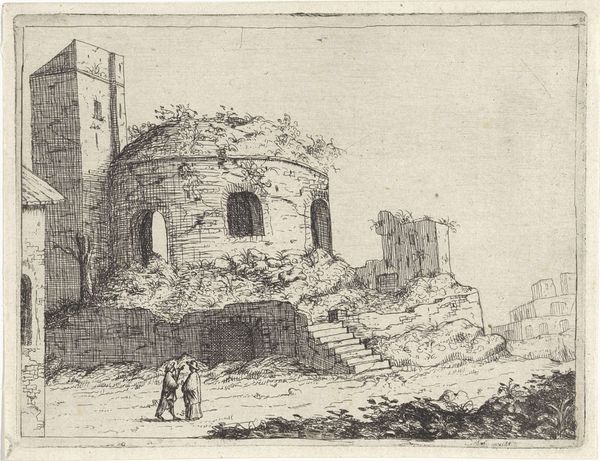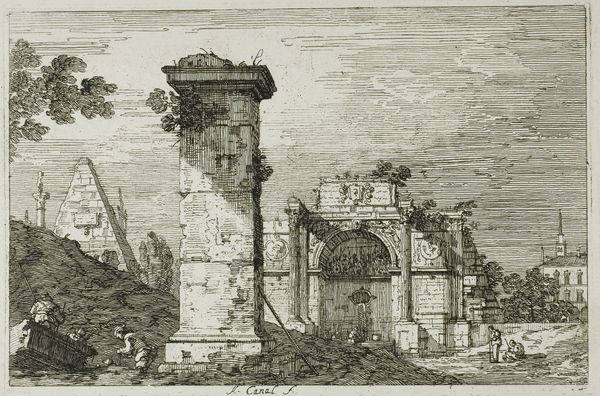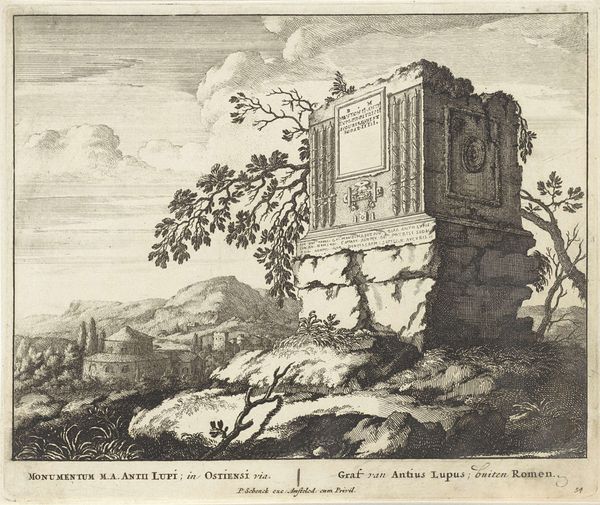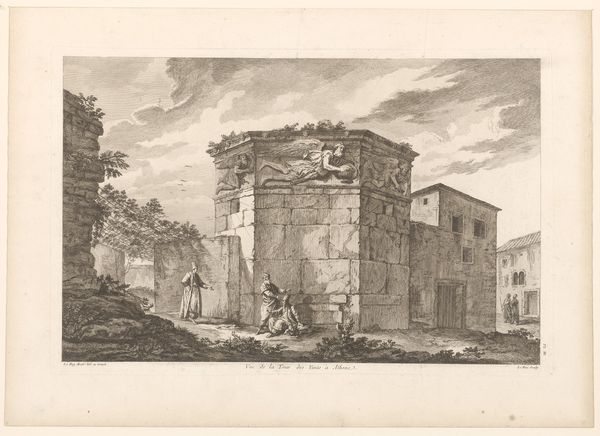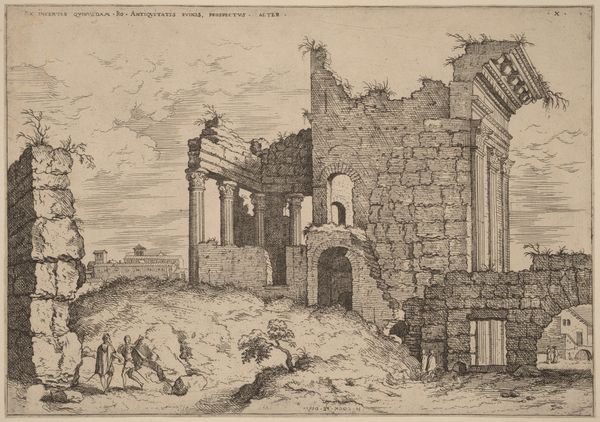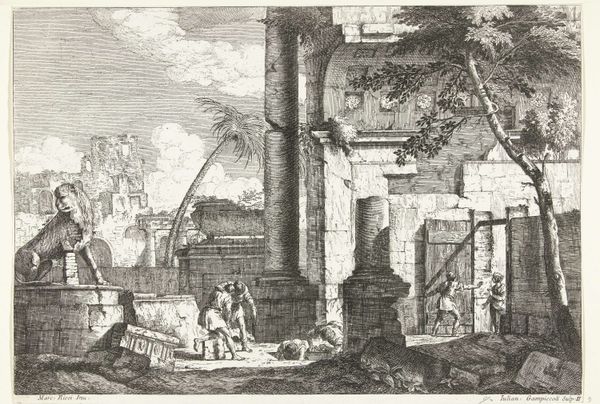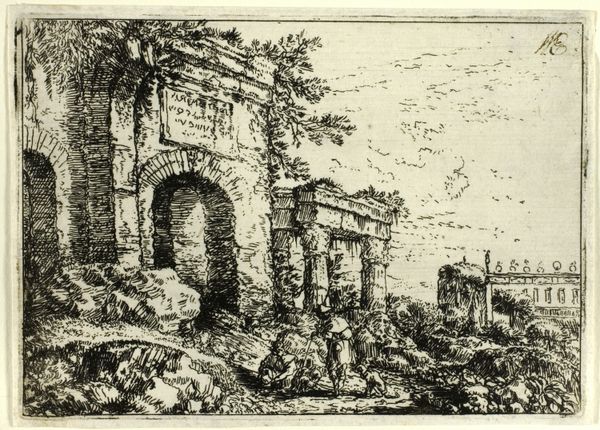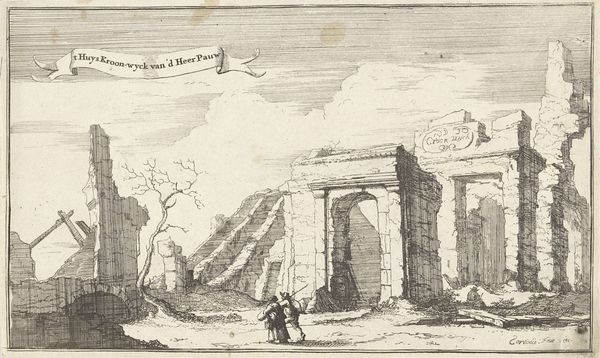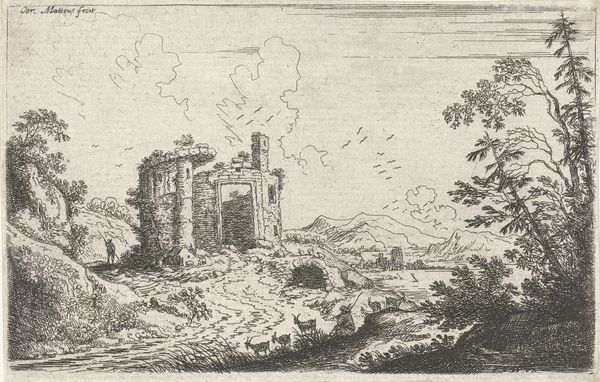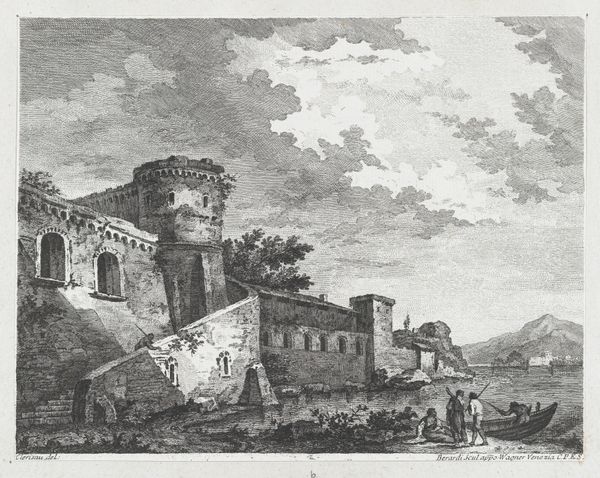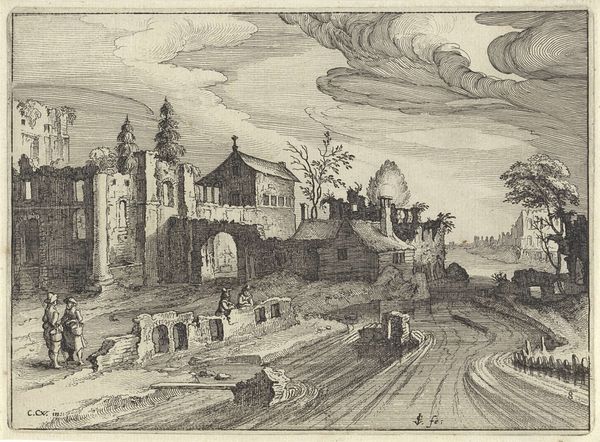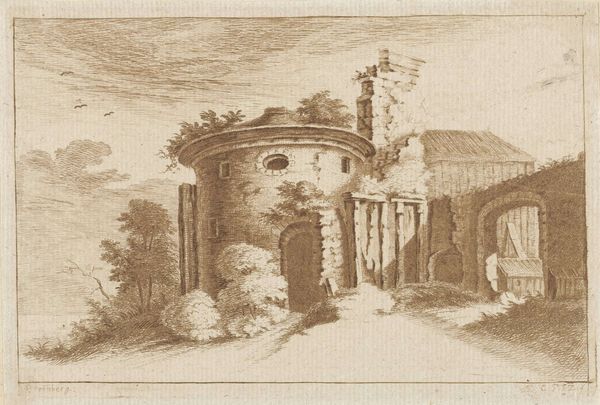
drawing, engraving, architecture
#
drawing
#
baroque
#
landscape
#
cityscape
#
engraving
#
architecture
#
realism
Dimensions: height 103 mm, width 163 mm
Copyright: Rijks Museum: Open Domain
Wenceslaus Hollar made this print of a Roman building using etching, a printmaking technique that relies on the corrosive power of acid. To create the image, Hollar would have coated a metal plate with a waxy, acid-resistant substance, then scratched an image into it with a needle. The plate was then immersed in acid, which bit into the exposed lines, creating grooves. Ink was applied to the plate, filling only the etched lines, and then pressed onto paper to create the print. What I find interesting is how such a labor-intensive and chemical process was used to depict architecture. Hollar painstakingly captured the texture of the stone, the play of light and shadow, and the overall decay that the building has suffered. This intricate process elevates the image beyond a mere record, infusing the architectural study with artistic value. Ultimately, Hollar's print is a reminder that making matters. It prompts us to consider the labor, skills, and cultural context embedded within every work of art.
Comments
No comments
Be the first to comment and join the conversation on the ultimate creative platform.
